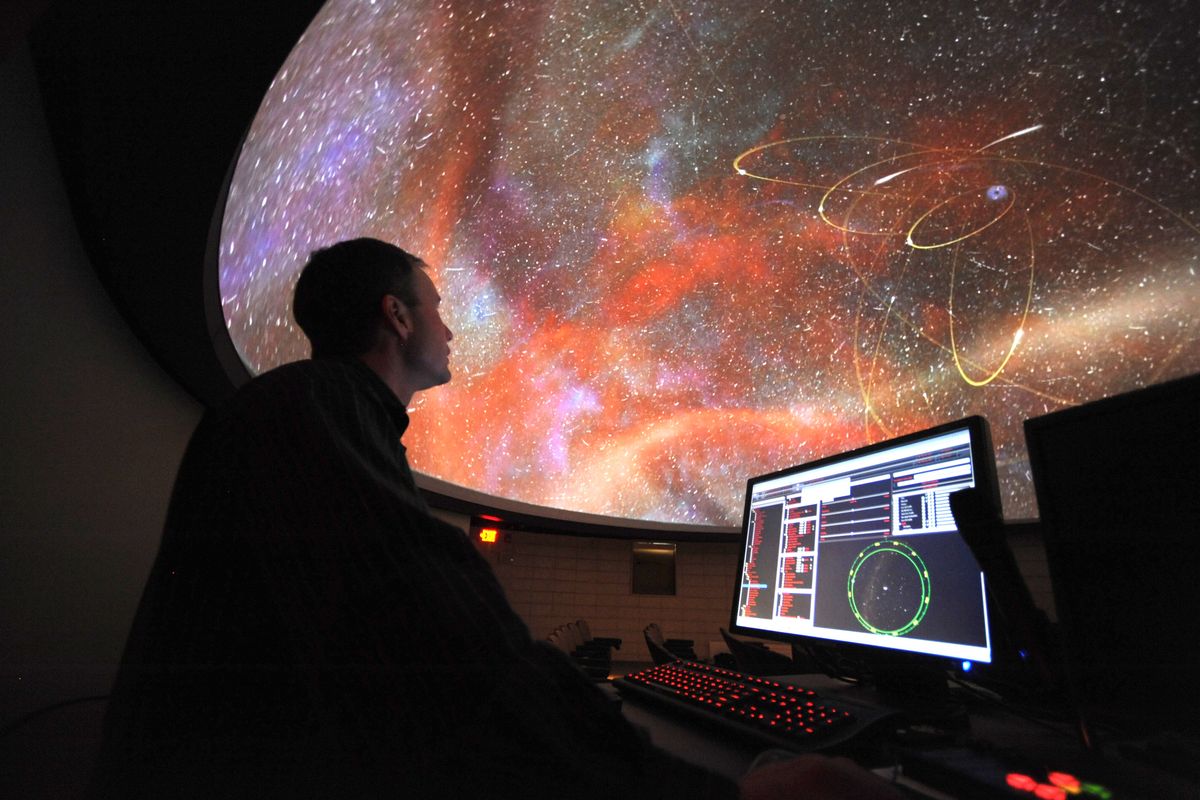Planetarium helps SFCC offer out-of-this-world learning

Spokane Falls Community College’s new science building will be dedicated today, and while officials are excited about the entire building, the Eos Planetarium is the prized centerpiece.
At Eos, the night sky is not just a pattern of lights reflected on a dome. It’s a digital image that can be manipulated to show any date in history, time of day or year, or a magnified portion of the sky. When instructional movies are shown, such as one of a black hole, it’s like IMAX “in the round.”
“We’re just a little excited,” said Jim Brady, dean of math, computing and science instruction at the college.
The 70,000-square-foot science building cost about $30 million. The planetarium itself was about $400,000, with a majority of the money coming from donors and fundraising – a point of pride for the college.
The facility’s first floor is dedicated to life sciences – two zoology labs, two biology labs, two anatomy/physiology labs (including a cadaver operating room) and a large botany lab. The second floor houses the physical sciences – four chemistry labs, two physics labs and two geology labs.
The community college is one of only two in Washington with a planetarium, and it may be the only one in the state with both a planetarium and a cadaver lab.
“I’m confident we have the best science building of any community college in the state,” said Brady.
Spring term started last week, and the first classes are being taught in the 53-seat planetarium. Astronomy instructor John Whitmer says he had a lengthy waiting list for his two on-campus classes and had to turn away numerous students.
“I could have filled 10 classes,” Whitmer said.
Starting next week, K-12 students will be attending planetarium shows at Eos.
“We basically told the schools, you get the kids here and the show is free,” Brady said. The showings are offered twice a week, and the planetarium is already booked through spring and taking reservations for fall.
Shows will be open to the public later this year. The cost will be about $20 for a family of four.
“When we do the public launch, we want to do it right,” Brady said. “We want to use the planetarium to bring people to the door and expose them to what a community college is all about. It’s not just a place where people go because they can’t get into another college. … It offers an affordable, good-quality education.”